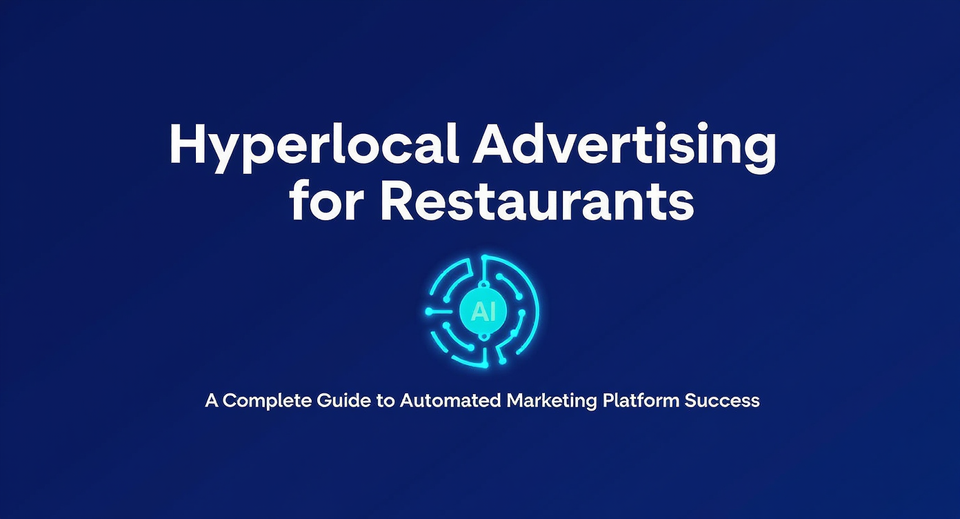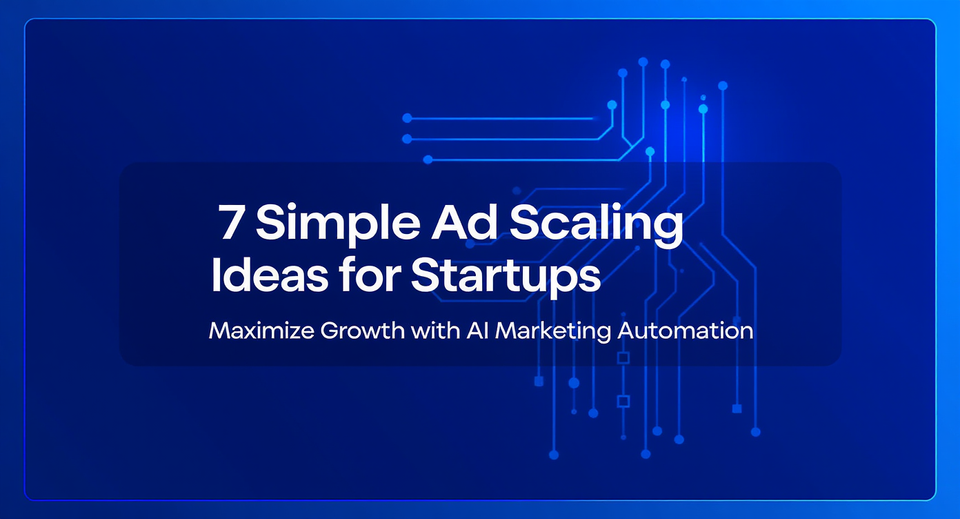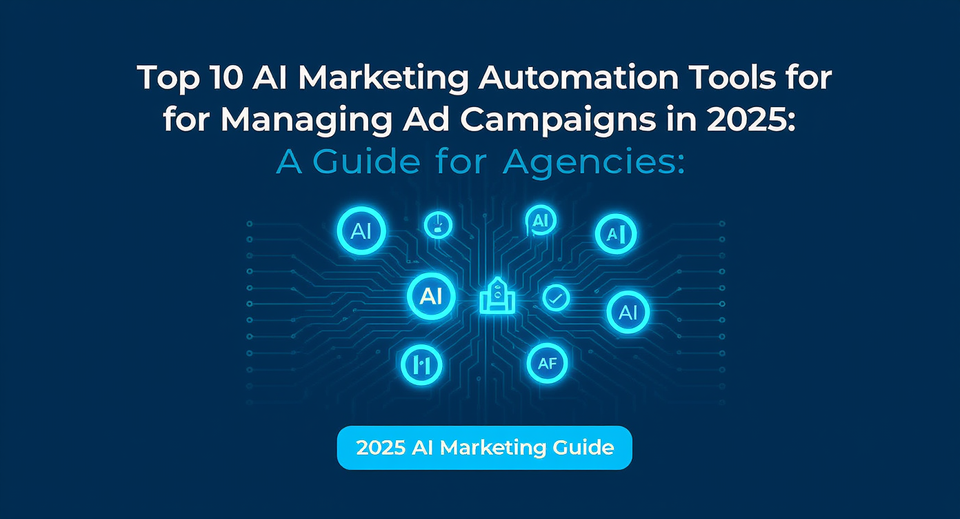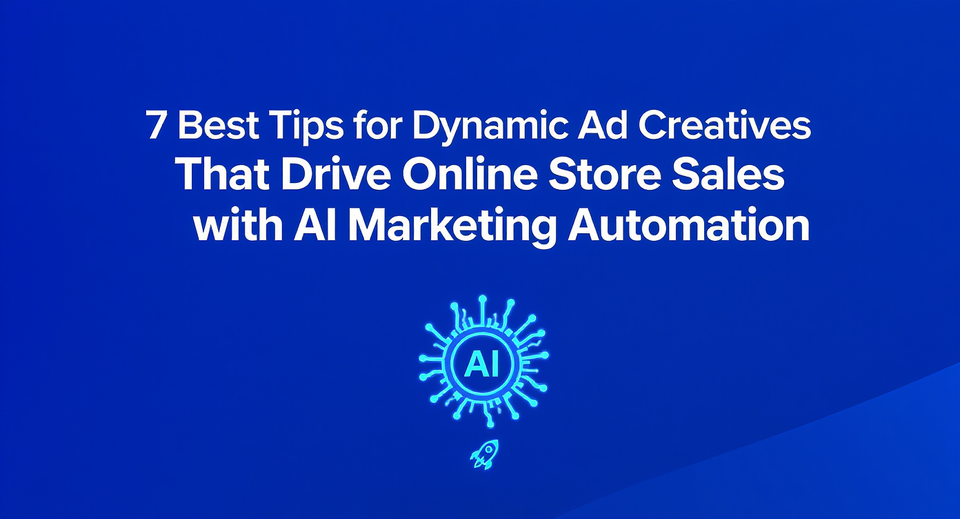AI Marketing Automation: Dynamic Creative Templates for Modern Advertising

In today's digital advertising landscape, personalization isn't just a nice-to-have—it's essential for campaign success. With modern ad platforms relying more on creative relevance than granular audience targeting, marketing agencies need efficient AI marketing automation solutions to scale personalized content across thousands of micro-segments.
Dynamic creative templates powered by AI marketing automation have emerged as the solution to this challenge, enabling agencies to deliver tailored ad experiences without overwhelming their creative teams or compromising brand consistency.
1. Why Personalization Matters in Modern Advertising
The numbers speak for themselves: personalized ads deliver a 202% better conversion rate compared to standard ads, according to research by Instapage. This dramatic improvement stems from creating more relevant experiences that resonate with specific audience segments.
Further reinforcing this point, Salesforce reports that 84% of customers say being treated like a person, not a number, is very important to winning their business. Similarly, Epsilon found that 80% of consumers are more likely to make a purchase when brands offer personalized experiences.
For marketing agencies, these statistics highlight a critical truth: clients expect campaigns that speak directly to their customers' unique needs and preferences. AI marketing automation through dynamic creative templates makes this level of personalization possible at scale.
2. The Measurable Benefits of Dynamic Creative Templates
Dynamic creative templates delivered through automated marketing platforms provide impressive performance improvements compared to static approaches:
- Increased Engagement: Dynamic creative templates can increase ad engagement by up to 50% compared to static ads, with personalized messaging driving higher interaction rates.
- Improved Click-Through Rates: According to Google, dynamic creative ads can improve click-through rates by up to 60% compared to standard display ads.
- Cost Efficiency: Marketing agencies that implement AI marketing automation report an average of 30% reduction in cost per acquisition.
- Market Growth: The global dynamic creative optimization market is projected to reach $1.49 billion by 2028, growing at a CAGR of 13.6% from 2021 to 2028, indicating strong industry adoption.
These performance gains stem from the ability to automatically test and optimize multiple creative combinations in real-time, delivering the most effective version to each viewer.
3. Essential Features of Effective Dynamic Creative Templates
For marketing agencies looking to implement dynamic creative templates with AI marketing automation, several key features are essential:
Modular Design Elements
Templates should break down ads into interchangeable components (headlines, images, CTAs, etc.) that can be mixed and matched based on audience data.
Data Integration Capabilities
Effective marketing campaign builders connect with customer data platforms, CRMs, and analytics tools to inform personalization decisions.
Cross-Format Adaptability
Templates should work across multiple ad formats (display, video, social, etc.) while maintaining consistent branding.
Automated Testing Framework
Built-in A/B testing capabilities help identify which creative elements perform best with specific audience segments.
Scalable Production Workflow
The automated marketing platform should reduce manual work while enabling thousands of variations without overwhelming approval processes.
4.Transforming Creative Production with AI Content Creation Tools
Surgegrowth offers a powerful AI brand management software solution for marketing agencies seeking to implement dynamic creative templates at scale. Their AI-powered creative production platform enables brands to launch thousands of personalized, high-performing ad creatives efficiently and on-brand.
With SurgeGrowth's marketing campaign builder, agencies can customize messaging, visuals, and CTAs for rapid experimentation—perfect for A/B testing and localization. The platform maintains design and brand consistency while automating the production of hundreds or thousands of variants across formats.
This Platform's approach treats creative as targeting, personalizing ads (like "Fresh Chicken in HSR Layout" or "Biryani for GenZ") so algorithms match messages to the right users. This creative-led strategy helps platforms learn faster and optimize better, delivering stronger results for clients.
5. Implementation Strategies for Marketing Agencies
For agencies looking to adopt AI marketing automation with dynamic creative templates, consider these implementation strategies:
Start with High-Volume Campaigns
Begin with campaigns that have sufficient scale to benefit from personalization and provide enough data for optimization.
Develop a Modular Creative Framework
Create a system of interchangeable creative elements that maintain brand consistency while enabling personalization.
Establish Clear Performance Metrics
Define KPIs that measure the impact of personalization on campaign performance, such as engagement rate, conversion rate, and cost per acquisition.
Build Progressive Personalization
Start with basic personalization (location, device, time) before advancing to more complex behavioral and intent-based personalization.
Create Feedback Loops
Implement systems to continuously analyze performance data and refine creative elements based on results.
6. Best Practices for Optimizing AI Marketing Automation
To maximize the effectiveness of dynamic creative templates, marketing agencies should follow these best practices:
Focus on Creative Quality
While AI content creation tools enable scale, the quality of individual creative elements remains crucial. Invest in compelling visuals and messaging that resonate with target audiences.
Balance Personalization and Privacy
As privacy regulations evolve, ensure personalization strategies respect user privacy and comply with relevant regulations.
Test Across the Customer Journey
Apply dynamic creative optimization at different stages of the customer journey, from awareness to conversion and retention.
Combine Human Insight with Automation
Use automated marketing platforms to handle scale and testing, but incorporate human creative judgment to guide strategy and maintain brand voice.
Continuously Refine Templates
Regularly update templates based on performance data, emerging trends, and evolving brand guidelines.
7. The Future of AI Marketing Automation
As AI and machine learning capabilities advance, dynamic creative templates will become even more sophisticated. Future developments will likely include:
- Deeper integration with first-party data sources
- More advanced predictive modeling for creative optimization
- Enhanced video and interactive content personalization
- Greater automation of creative decision-making
- Improved cross-channel consistency and measurement
Marketing agencies that master AI marketing automation now will be well-positioned to leverage these future innovations and deliver even greater value to clients.
Conclusion
Dynamic creative templates represent a fundamental shift in how marketing agencies approach ad creation and optimization. By enabling personalization at scale, these AI content creation tools help agencies deliver more relevant, engaging, and effective campaigns for their clients.
As ad platforms continue to prioritize creative relevance over audience targeting, the ability to produce and optimize personalized creative at scale will become an increasingly important competitive advantage for marketing agencies.
By implementing dynamic creative templates with AI brand management software like SurgeGrowth, agencies can reduce production costs, improve campaign performance, and deliver the personalized experiences that modern consumers expect—all while maintaining the brand consistency and creative quality their clients demand.
Frequently Asked Questions
Q: What is AI marketing automation for dynamic creative templates?
A: AI marketing automation for dynamic creative templates is a framework that allows marketers to automatically generate multiple ad variations by combining different creative elements based on user data, enabling personalized advertising at scale through artificial intelligence.
Q: How do automated marketing platforms improve ad performance?
A: Automated marketing platforms improve performance by delivering personalized content that resonates with specific audience segments, resulting in higher engagement rates (up to 50% increase), better click-through rates (up to 60% improvement), and lower acquisition costs (average 30% reduction).
Q: What types of personalization can be implemented with AI content creation tools?
A: AI content creation tools can personalize ads based on various factors including location, demographics, behavior, purchase history, device type, time of day, weather conditions, and user interests.
Q: How can marketing agencies get started with AI brand management software?
A: Agencies can get started by identifying high-volume campaigns suitable for personalization, developing a modular creative framework, establishing clear performance metrics, and implementing marketing campaign builders like SurgeGrowth that automate the creation and optimization of personalized ad variants.
Q: What's the difference between dynamic creative optimization and AI marketing automation?
A: Dynamic creative templates provide the framework for creating personalized ad variations, while AI marketing automation is the broader process of using artificial intelligence to automatically test, optimize, and deliver these variations based on performance data to maximize effectiveness.
Citations:
- Instapage, "70 Personalization Statistics Every Marketer Should Know in 2025," https://instapage.com/blog/personalization-statistics
- Salesforce, "State of the Connected Customer, 6th Edition," https://www.salesforce.com/resources/research-reports/state-of-the-connected-customer/
- Epsilon, "Deliver Tailored Experiences with Travel Personalization," https://www.epsilon.com/us/insights/resources/personalization-research-report
- Think with Google, "Dynamic Creative Optimization: A Complete Guide," https://www.thinkwithgoogle.com/marketing-strategies/data-and-measurement/dynamic-creative-optimization-guide/
- Market Research Future, "Dynamic Creative Optimization Market Research Report – Forecast to 2030," https://www.marketresearchfuture.com/reports/dynamic-creative-optimization-market-10523




